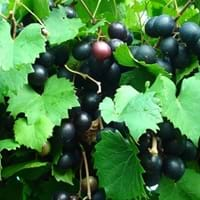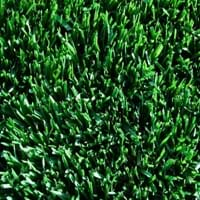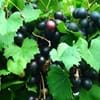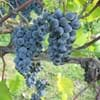Life Span
Perennial
Perennial
Origin
Southeastern United States, Mexico
World/Pandemic, North America, Europe
Types
Not available
Alene, Barblue, Caliber, Canterbury
Habitat
Lowland, sand dunes, Upland
Cultivated Beds, Lawn, meadows
USDA Hardiness Zone
6-10
3-10
Sunset Zone
Not Available
A1, A2, A3, 1a, 1b, 2a, 2b, 3a, 3b, 4, 5, 6, 7, 8, 9, 10, 11, 14, 15, 16, 17, 18, 19, 20, 21, 22, 23, 24
Habit
Vining/Climbing
Mat-forming
Minimum Height
Not Available
Minimum Width
Not Available
Flower Color
White, Green
Purplish Green
Flower Color Modifier
Bicolor
Bicolor
Fruit Color
Green, Burgundy, Plum, Bronze, Brown
Not Available
Leaf Color in Spring
Green
Green, Blue Green, Gray Green
Leaf Color in Summer
Green
Light Green
Leaf Color in Fall
Green, Gold, Tan
Green, Blue Green, Gray Green
Leaf Color in Winter
Light Green
Green, Blue Green
Leaf Shape
V-Shaped
Narrowly linear
Plant Season
Spring, Summer, Fall
Spring, Summer, Fall
Sunlight
Full Sun, Partial Sun
Full Sun, Partial Sun, Partial shade
Type of Soil
Clay, Loam, Sand
Clay, Loam
The pH of Soil
Acidic, Neutral
Acidic, Neutral
Soil Drainage
Well drained
Well drained
Bloom Time
Spring, Late Spring, Early Summer
Summer
Tolerances
Pests and diseases, Shade areas
Not Available
Where to Plant?
Ground, Pot
Ground
How to Plant?
Layering, Seedlings
Seedlings, Sod
Plant Maintenance
Medium
Medium
Watering Requirements
Requires regular watering, Water during dry weather
Water frequently while growing
In Summer
Lots of watering
Lots of watering
In Spring
Moderate
Moderate
In Winter
Average Water
Average Water
Soil pH
Acidic, Neutral
Acidic, Neutral
Soil Type
Clay, Loam, Sand
Clay, Loam
Soil Drainage Capacity
Well drained
Well drained
Sun Exposure
Full Sun, Partial Sun
Full Sun, Partial Sun, Partial shade
Pruning
Remove branches that rub together, Remove damaged leaves, Remove dead branches, Remove dead leaves
Remove damaged leaves, Remove dead branches, Remove dead leaves
Fertilizers
Apply 10-10-10 amount, Apply N-P-K, Requires high amount of nitrogen
Nitrogen
Pests and Diseases
Leaf spot, Nematodes, Powdery mildew
Dollar spot, Rust, Summer Patch
Plant Tolerance
Pests and diseases, Shade areas
Drought
Flowers
Insignificant
Insignificant
Flower Petal Number
Single
Single
Foliage Texture
Medium
Fine
Foliage Sheen
Glossy
Matte
Invasive
Sometimes
Sometimes
Allergy
Not Available
Cough, Itchy eyes, Runny nose
Aesthetic Uses
Beautification
Ground Cover
Beauty Benefits
Not Available
Not Available
Environmental Uses
Agroforestry
Erosion control
Medicinal Uses
anti-inflammatory, Anti-oxidant
Not Available
Part of Plant Used
Fruits, Leaves
Leaves
Other Uses
Sometimes used for making wine, Used to make juice, Used to make yellow dye
Used in lawns and turf
Used As Indoor Plant
No
No
Used As Outdoor Plant
Yes
Yes
Garden Design
Edible, Fruit / Fruit Tree, Rock Garden / Wall, Screening / Wind Break, Topiary / Bonsai / Espalier, Vine
Lawns and Turf
Botanical Name
VITIS rotundifolia
POA pratensis
Common Name
Muscadine
Kentucky Bluegrass
In Hindi
Muscadine
Kentucky Bluegrass
In German
Muscadine
Kentucky Bluegrass
In French
Muscadine
Kentucky Bluegrass
In Spanish
Muscadine
Pasto azul de Kentucky
In Greek
μοσχοστάφυλο
Κεντάκυ Bluegrass
In Portuguese
Muscadine
Kentucky Bluegrass
In Polish
Muscadine
Wiechlina
In Latin
Muscadine
Kentucky Bluegrass
Phylum
Magnoliophyta
Magnoliophyta
Class
Magnoliopsida
Liliopsida
Order
Rhamnales
Cyperales
Clade
Angiosperms, Eudicots, Rosids
Angiosperms, Commelinids, Monocots
Tribe
Not Available
Poeae
Subfamily
Not Available
Pooideae
Importance of Muscadine and Kentucky Bluegrass
Want to have the most appropriate plant for your garden? You might want to know the importance of Muscadine and Kentucky Bluegrass. Basically, these two plants vary in many aspects. Compare Muscadine and Kentucky Bluegrass as they differ in many characteristics such as their life, care, benefits, facts, etc. Every gardener must at least have the slightest clue about the plants he wants to plant in his garden. Compare their benefits, which differ in many ways like facts and uses. The medicinal use of Muscadine is anti-inflammatory and Anti-oxidant whereas of Kentucky Bluegrass is Not Available. Muscadine has beauty benefits as follows: Not Available while Kentucky Bluegrass has beauty benefits as follows: Not Available.
Compare Facts of Muscadine vs Kentucky Bluegrass
How to choose the best garden plant for your garden depending upon its facts? Here garden plant comparison will help you to solve this query. Compare the facts of Muscadine vs Kentucky Bluegrass and know which one to choose. As garden plants have benefits and other uses, allergy is also a major drawback of plants for some people. Allergic reactions of Muscadine are Not Available whereas of Kentucky Bluegrass have Cough, Itchy eyes and Runny nose respectively. Having a fruit bearing plant in your garden can be a plus point of your garden. Muscadine has showy fruits and Kentucky Bluegrass has no showy fruits. Also Muscadine is not flowering and Kentucky Bluegrass is not flowering . You can compare Muscadine and Kentucky Bluegrass facts and facts of other plants too.





